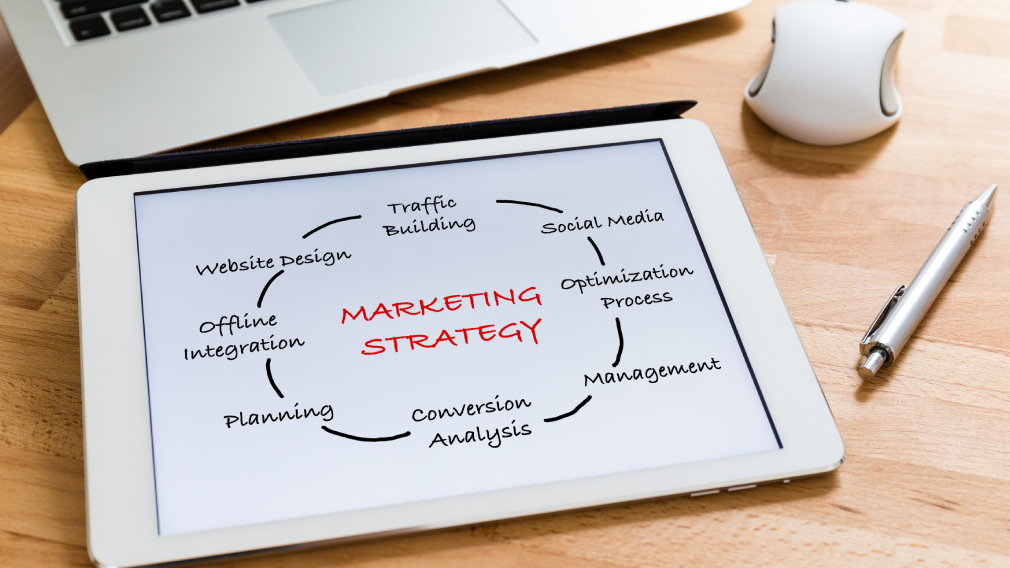In today’s competitive digital landscape, understanding how to write content for a service page can make the difference between a casual visit and a high-value conversion. You want your service page to demonstrate exactly how you help customers with their unique needs, encourage them to trust your expertise, and ultimately guide them toward contacting you or purchasing your services. Creating this type of page may seem intimidating, but it becomes much more manageable when you take it step by step. Below, you’ll find a supportive, comprehensive guide that explains how to organize your ideas, optimize layout, and eliminate barriers to help you meet your conversion goals.
Understand the service page purpose
Before you begin drafting content, it’s essential to clarify your service page’s goal. Generally, this page should do four main things:
- Establish credibility by showcasing your expertise.
- Explain who you serve and how you address specific pain points.
- Communicate the benefits of your services in clear, empathetic language.
- Provide a clear call to action (CTA) that encourages leads to take the next step.
Many visitors to a service page have already shown interest in what you offer, so your primary job is to nudge them from interest to action. According to Mad Mind Studios, strong structure and clear headings improve both readability and SEO. When users quickly find the information they seek, they’re far more likely to convert. Additionally, referencing your experience creates an authoritative presence that resonates with people who want to overcome barriers—whether those barriers are technical, financial, or related to brand identity.
Organize essential sections effectively
Clear segmentation gives your users a pathway to navigate your content confidently. By structuring your sections, you help them glean essential details at a glance. Consider these foundational elements:
- An attention-grabbing headline
- A concise benefit statement
- A breakdown of the service’s value
- Proof of success, such as testimonials or case studies
- A direct path to contact or purchase
One research study shared by the Forge and Smith Blog found that almost 80% of people scan content, while only 16% read everything. This means you should emphasize clarity. Use headings to sort content by topic and subheadings to address finer points. When scanning your page, prospective clients should instantly see sections such as “What our service includes,” “How we support your goals,” and “Why trust our team.”
If you’re planning your structure in greater detail, you might also find the insights in how to plan a website content structure particularly helpful. By developing a comprehensive outline, you ensure that each section flows seamlessly to the next.
Highlight your unique benefits
There’s a reason people choose your service: you offer something special. You might fill a niche, work faster, or resolve the exact pain points that others overlook. The difference can be your specialized knowledge or your approach to delivering a supportive environment for your clients. Whatever your strengths, shine a light on them. People want to believe you understand their struggles and can provide solutions that instill hope.
Show the real impact
Rather than just listing features, translate them into tangible outcomes. For instance, if you’re a website design agency that specializes in mobile responsiveness, explain how a mobile-friendly layout boosts lead retention and how it can double or triple on-the-go conversions—particularly important for busy prospects who might only browse services from a smartphone. You can reference how to build a mobile responsive website for further implementation ideas if you also offer that capability.
Use testimonials as social proof
Customer testimonials are incredibly powerful trust builders. According to Podia, 72% of consumers say positive reviews make them trust a business more. Featuring real stories about how your product or service made a difference fosters credibility and shows potential clients they aren’t alone in their challenges. You may even consider adding before-and-after comparisons or direct quotes, ideally next to a client photo or company logo.
Optimize user-focused design
Your service page must be visually appealing and easy to navigate. An engaging design, streamlined menus, and white space around elements can keep visitors reading longer. One user experience principle from Mad Mind Studios is to use background color blocks or highlight sections so you can direct attention to crucial pieces of information without requiring advanced design skills.
Provide clarity with headings
Use clear, concise headings that reflect each section’s content. Tools like anchor or jump links enable readers to skip directly to their topic of interest, improving user experience and accessibility. This approach can also help reduce bounce rates by guiding users quickly to relevant details.
Include multi-format content
Not everyone likes to read lengthy paragraphs. Some are more responsive to visuals or audio. If it fits your service category, infographics or short videos can demonstrate your expertise in a dynamic format. Statistics from the Forge and Smith Blog suggest that incorporating visuals can boost retention by around 55%. Consider short demonstration videos that let users see your solutions in action, or an infographic that highlights your process steps or success metrics.
Support easy navigation
Focus on a streamlined user journey so that visitors never feel confused about what to do next. For instance, if you cater to local service companies, highlight how they can book consultations, get quotes, or schedule visits. Strategic placement of a top navigation menu also matters—a well-structured navigation bar can lead users to secondary pages where more details live. If you’re unsure how to proceed, how to design a navigation menu that improves engagement can guide you further.
Incorporate lead-focused elements
A service page ultimately aims to convert interested visitors into leads or paying customers. You achieve this by carefully positioning lead-focused content and tools. Crucial elements include:
- Well-labeled forms that collect only necessary information
- Prominent, action-oriented CTAs (e.g., “Schedule Your Free Consultation”)
- In-depth product or service descriptions that address key pain points
Perfect your primary call to action
Your main CTA should capture attention, spark curiosity, and describe a clear next step. Avoid generic phrases like “Get started.” Instead, try to mention benefits: “Access Your Customized Plan” or “Secure Your Spot Now.” Research from Webflow underscores the effectiveness of creative CTA text. Also, consider CTA buttons with a distinct color that stands out from your site’s palette.
Positions near the top right of the page or directly after a compelling testimonial tend to function well. Place additional CTAs, but don’t overwhelm visitors with too many prompts. If you have multiple actions (like “Call now” and “Start your free trial”), emphasize one main action and offer a secondary choice only if it’s necessary.
Align form placement with user intent
Keeping forms above the fold might work when your service is straightforward, and you already have brand trust. However, if you’re dealing with something more complex or you need deeper information, place the form lower on the page so visitors can first read details and see testimonials. If you want more specifics in your forms—such as budgets or project timeframes—explain briefly why you need that data and how sharing it benefits the user.
You can learn more about integrating forms effectively by visiting how to integrate forms and booking into your website. By aligning the form with your service page’s narrative, you’ll capture more qualified leads.
Strengthen trust and credibility
Your audience wants reminders that you’re reliable, adept, and ready to help them conquer unique obstacles. Inject social proof, brand consistency, and clarity about your process:
- Display relevant certifications, awards, or associations.
- Add a multi-step timeline describing your service approach.
- Offer easy-to-find contact details.
- Refer to well-known brands or local organizations you’ve collaborated with.
Present social proof near conversion points
Placing real quotes from satisfied clients near your sign-up button can motivate prospects to act. A study from Custify points out that well-targeted testimonials boost conversions and sales, especially when they appear near key conversion spots. This layout reassures readers at the exact moment they might hesitate.
Showcase consistent branding
Ensure the fonts, colors, and messaging on your service page match the rest of your site. Consistent design fosters familiarity, and familiarity builds credibility over time. If you’re not sure how to blend brand elements, you might explore the importance of brand consistency in website design for further tactics.
Stay compliant and accessible
Accessibility is integral for creating an inclusive, user-friendly experience. If your visitors have diverse abilities, you want them to navigate your service page comfortably. Consider these actions:
- Ensure text is readable with high contrast.
- Add alt tags to images to aid screen readers.
- Provide transcripts or captions for video content.
- Offer keyboard navigation for interactive website elements.
For U.S.-based businesses, aligning with ADA compliance requirements is crucial. The ada compliance checklist for websites can help you meet these guidelines, enhancing user trust and avoiding legal issues.
Hreflang and language optimization
If your service is relevant internationally, language optimization ensures you reach new markets effectively. As highlighted by Weglot, it’s important to translate both visible text and metadata. Consider adding a language indicator in your URL or using hreflang tags to show search engines which region and language your content targets.
Keep performance top-notch
Site speed, Core Web Vitals, and mobile responsiveness are critical. An underperforming website can drive visitors away quickly, especially if they’re on mobile. According to Mad Mind Studios, using white space and structuring the layout so key elements load quickly can drastically improve user satisfaction.
Boost speed with efficient design
Large images or unoptimized code can hamper your performance. Slow load times affect user satisfaction and reduce the chance of conversion. If your page doesn’t load within a few seconds, many visitors simply leave. For technical best practices, see how to optimize website speed for better performance, which covers caching, compression, image optimization, and more.
Leverage WordPress specialization
If you’re using WordPress, specialized plugins can help improve performance, security, and even language optimization. Tools for caching, minification, and security can all enhance user experience without bloating your site. For more detailed insights, you can check out our guide on wordpress plugins for website performance and security.
At Antilles, our WordPress-focused strategies help local service companies stand out with custom site designs and streamlined speed. By focusing on the right theme, optimization tools, and user flow, you can create a robust website that enhances your credibility in local markets while capturing qualified leads.
Write a compelling conclusion
After addressing all the critical aspects of your service, your conclusion can confirm the value you provide, reiterate the next step, and encourage the user to act. This approach resonates with final-stage leads—those who read, feel assured of your credibility, and simply want a quick path to get started.
Summarize key benefits
A short bulleted summary can remind visitors why your service stands out:
- Clear, benefit-driven content tailored to their unique challenges
- Trust signals, including testimonials and certifications
- A user-friendly, accessible design that welcomes everyone
- Quick load times and strong SEO for a streamlined experience
- A direct CTA that guides them toward the solution they seek
Invite deeper engagement
Conclude with an empathetic tone that emphasizes you’re ready to address any challenges, provide tailored solutions, and offer ongoing support. If visitors still need more reassurance, you might link to additional resources such as how to run a website design audit or homepage vs landing page design differences. When readers feel you understand their viewpoint and have thoroughly answered their questions, they’re significantly more likely to convert.
Additional ideas for a dynamic service page
If you’re eager to enhance your page further, these extra steps can strengthen engagement:
- Provide a brief FAQ section to clarify common objections or questions about cost, timelines, or processes.
- Embed short video testimonials from clients who have overcome industry-specific obstacles with your help.
- Use a table to compare service packages side by side, showing what’s included in each.
- Connect your new contacts directly to your CRM system. If you need more details, explore how to connect your crm to your website.
- Emphasize local relevance. If you serve a specific region, mention real-world insights about local culture or regulations. You could also explore how to structure a website for local seo to boost regional visibility.
| Feature | Description | Benefit to User |
|---|---|---|
| FAQ Section | Answers recurring queries | Saves time, removes uncertainty |
| Video Testimonials | Real client success stories | Builds trust and emotional connection |
| Package Comparison | Side-by-side plan details | Clarifies options and pricing |
| CRM Integration | Auto-syncs new leads | Improves workflow and lead nurturing |
| Local SEO Structure | Targets location-specific searches | Attracts visitors from relevant local regions |
By ensuring each of these elements is aligned with user intent, you further demonstrate your commitment to meeting visitors’ needs right now.
Final thoughts on creating a selling service page
Learning how to write content for a service page that sells isn’t just about stringing together features, it’s about creating an empathetic, user-centered narrative. When you present your service as a way to solve real problems, highlight key benefits, and remove friction through design, your offer resonates with the people you want to serve.
Remember these core principles:
- Pinpoint your audience’s challenges and address them using empathetic language.
- Structure content for quick scanning, ensuring that vital information is easy to find.
- Place your CTAs strategically, close to moments of maximum interest, and ensure each CTA clarifies the immediate benefit.
- Maintain authenticity through testimonials, awards, and transparent descriptions of your approach.
- Keep accessibility and speed in mind; a well-performing site that supports all visitors fosters trust.
If you’re looking to take the next step, consider exploring building a lead generation website or website design best practices for seo. Both resources can expand on the techniques you’ve just learned and guide you toward building a profitable, conversion-focused online presence. By offering a supportive, carefully structured service page, you can foster confidence, encourage action, and help your visitors move closer to achieving their goals.















